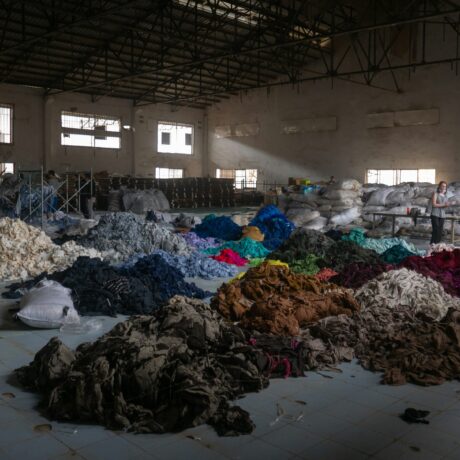Diversity, PR and the missing Common Sense
Op Ed piece for Fashion Revolution South Africa
By Jette Kristiansen
“Common sense is actually not that common. In fact, you would be surprised to learn how rare it is…”
I have heard this quoted many times by a friend of mine, a successful PR consultant. It is usually accompanied by an apologetic smile and a shrug of the shoulders when the conversation turns to his work. My point is that most of us are so fast-paced and tunnel-visioned that we lose perspective. We frequently need an outsider’s help to be able to re-focus on things we might already know deep down. And so, common sense has become a sought-after commodity.
The last couple of months have given us plenty of examples of this. Two international corporate institutions in the cosmetics industry have had serious dents in their reputation because they made rookie mistakes that most of us could have predicted would go wrong, if we had given it some thought.
In South Africa, supporters of the Economic Freedom Fighters, a political party with 44 seats in Parliament, went on a rampage and damaged a number of shops belonging to the Clicks beauty and pharmaceutical retailer as a reaction to an online ad for the Unilever-owned TRESemmé shampoo brand they found racist. The ad, which labelled blond, straight, shiny hair as “healthy and normal” while black hair was “unhealthy, dry and damaged”, quickly trended on Twitter under the hashtag #Clicksmustfall and sent the company, which has a 25% market share in a country where around 90% of the population is black, into crisis mode.
Meanwhile, in the UK, the Estée Lauder-owned perfume brand Jo Malone faced a similar shitstorm in the autumn, when it became known that a highly publicised commercial, starring and created by the black Star Wars actor John Boyega, had been re-shot with an Asian cast for the Asian market – without Boyega’s knowledge. The incident added fresh salt in an old wound as black actors have routinely been photoshopped out of Star Wars posters in Asia in the past. The scandal prompted the perfume brand’s original founder Jo Malone to go on live TV to express how “horrified and disgusted” she was at the way John Boyega had been treated, while John Boyega quit his role as ambassador for the brand.
No quick fixes
Interestingly, Clicks is a company that had actually wanted to take transformation and diversity seriously. The department responsible for sending out the fateful ad was in fact ethnically very diverse. Nevertheless, when Clicks received the ad from TRESemmé’s American headquarters it was published online as a matter of routine without much reflection.
So what went wrong in the few seconds before the button was pressed? Did the person who received the image not realise that it would perceived as offensive? Did he or she in fact grasp the consequences but wasn’t sufficiently empowered in the organisation to speak up? “Better do as I’m told without asking any questions…” Or was there a “this is not my problem” culture in the company? I am pretty sure we will never find out, but I hope that Clicks will – and that they will learn from their mistakes.
Jo Malone has apologised profusely in the UK and so has Estée Lauder in the US, but many marketeers in China don’t understand the uproar. In some quarters a cultural bias against black people is a “western” problem that they don’t want to engage with.
It seems to me that we have reached the next step on the road to diversity. For a while, many companies thought that the way to fix things was a numbers game. Diversity, inclusivity and cultural understanding was thrown into the great grinder that is governance and the result was a complex mathematical formula that addressed representation in the workforce. The thinking behind it was that if a company’s workforce reflects different life experiences, it would automatically act accordingly. It is a seductive way of thinking, as numbers and statistics are relatively straight forward to implement without too much introspection. However, it is now slowly dawning on us that it is more complicated than that.
Unfortunately, even a finely tuned and perfectly diverse workforce is not the one stop solution to solving all your problems or addressing all challenges in the arena of cultural diversity. As we probably know by now, one single elderly gentleman in the boardroom or at the management meeting does not solve all challenges with customer service to elderly customers, marketing to an elderly segment or maintaining an elderly workforce – even if he sits at the end of the table.
Diversity can’t be resolved by a quick fix. Policies and regulations are not enough. At the end of the day, it is a matter of company culture. You need time and willingness to listen. You need a safe working environment which encourages reflection. You need an openness which welcomes and takes on board many different people’s life experiences. There is no point having a diverse workforce if they are not heard. On the other hand, a company culture where people feel safe and are encouraged to reflect and speak up will create a robustness and a flexibility in an organisation which will have a positive effect in many other business areas such as risk management, innovation and customer relations. – And it might just rekindle the common sense we thought we had lost.








